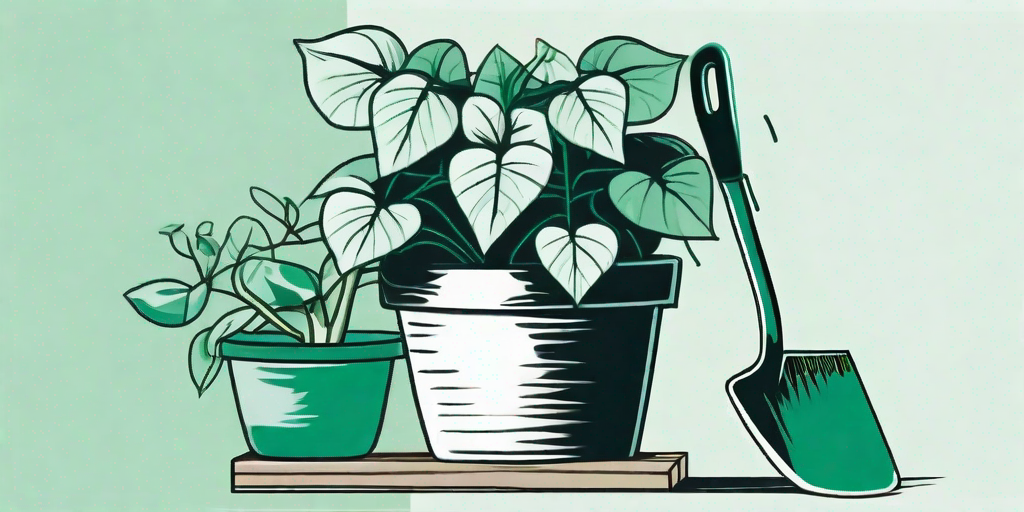
Welcome, fellow plant enthusiasts! Today, we're going to delve into the world of variegated ivy, a plant that's as striking as it is versatile. With its vibrant green leaves streaked with white or yellow, this ivy is a real showstopper. But how do you grow and care for this botanical beauty? Buckle up, because we're about to embark on a horticultural journey of epic proportions!
The Basics of Variegated Ivy
Before we dive into the nitty-gritty of ivy care, let's get to know our plant a little better. Variegated ivy, also known as Hedera helix 'Variegata', is a type of English ivy with a twist. Its leaves are not just green, but also adorned with patches of white or yellow. This makes it a popular choice for adding a splash of color to gardens, walls, and indoor spaces.
Variegated ivy is a hardy plant that can thrive in a variety of conditions, but it does have its preferences. It likes well-drained soil, a bit of shade, and a cool environment. Now that we've covered the basics, let's get down to the details of how to grow and care for this plant.
How to Grow Variegated Ivy
Starting from Seeds
Starting variegated ivy from seeds is a bit like baking a cake from scratch. It takes time, patience, and a little bit of magic (okay, maybe not the magic part). The first step is to get your hands on some ivy seeds. You can find these online or at a local garden center.
Once you have your seeds, soak them in water for 24 hours to soften the seed coat. Then, plant them in a well-draining soil mix, about 1/4 inch deep. Keep the soil moist and in a cool, shaded area. With a bit of luck and a lot of patience, you should see sprouts in about 4-6 weeks.
Propagating from Cuttings
If waiting for seeds to sprout isn't your cup of tea, you can also propagate variegated ivy from cuttings. This is a quicker and more reliable method. Simply take a cutting from a healthy ivy plant, making sure it has at least one leaf node. Then, place the cutting in a glass of water, making sure the node is submerged.
Change the water every few days to prevent bacteria build-up. In a few weeks, you should see roots starting to grow from the node. Once the roots are a few inches long, you can plant the cutting in soil. Voila! You've got yourself a new ivy plant.
Caring for Variegated Ivy
Watering and Feeding
Variegated ivy is a bit like a cat. It likes attention, but not too much. When it comes to watering, it's better to err on the side of too little than too much. Overwatering can lead to root rot, which is a surefire way to kill your plant. Instead, water your ivy when the top inch of soil feels dry to the touch.
As for feeding, a monthly dose of a balanced liquid fertilizer during the growing season (spring and summer) should do the trick. Just remember, less is more. Over-fertilizing can lead to salt build-up in the soil, which can harm your plant.
Light and Temperature
Variegated ivy likes a bit of shade, but it also appreciates some indirect sunlight. A spot near a north or east-facing window would be ideal. As for temperature, this ivy prefers cooler conditions. Try to keep it in an area where the temperature stays between 50-70°F (10-21°C).
Remember, variegated ivy is a bit of a diva. It likes its conditions just so. Too much sun can scorch its leaves, while too little can cause the variegation to fade. Similarly, too much heat can make it wilt, while too much cold can cause it to freeze. It's all about finding the right balance.
Common Problems and Solutions
Pests
Like any plant, variegated ivy can be susceptible to pests. The usual suspects include aphids, spider mites, and scale insects. If you notice any of these critters on your plant, don't panic. A simple solution of water and mild dish soap sprayed on the leaves should send them packing.
Diseases
Variegated ivy can also be prone to certain diseases, such as leaf spot and root rot. Leaf spot is usually caused by a fungus and can be treated with a fungicide. Root rot, on the other hand, is often a result of overwatering. If you suspect your plant has root rot, you may need to repot it in fresh, well-draining soil.
FAQs
- Can variegated ivy grow indoors?
Yes, variegated ivy can be grown indoors. In fact, it makes a great houseplant due to its low light requirements and ability to purify the air.
- Is variegated ivy toxic?
Yes, all parts of the variegated ivy plant are toxic if ingested. Keep it out of reach of children and pets.
- How fast does variegated ivy grow?
Variegated ivy is a relatively fast grower, especially during the warmer months. With proper care, it can grow several feet in a year.
Conclusion
And there you have it, folks! Everything you need to know about growing and caring for variegated ivy. With a bit of patience and a lot of love, you too can have a stunning ivy plant to brighten up your home or garden. So why wait? Start your ivy adventure today!
Remember, the journey of a thousand miles begins with a single step... or in this case, a single ivy cutting. Happy gardening!















